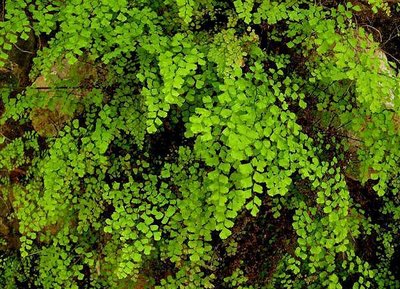Facts About Maidenhair Fern

Adiantum pedatum five-fingered maidenhair fern is native to the whole Atlantic seaboard of North America, to the center of the continent, but not the western half of the continent, where its environmental niche is filled by A. aleuticum, the Western Maidenhair. Formerly these two ferns were thought to be variants of the same speces, so outdated references are apt to state that A. pedatum is found throughout the continent.
It is not at all sun tolerant, requirng shade to deep shade. Nor can it tolerate droughtiness. Given its minimal requirements of shade & moisture & organically rich soil, it is fantastically hardy. It likes to be surrounded by leaflitter, so does best under deciduous trees. It dies back entirely in winter so is not worried that its location gets sunny after leaf-fall.

It is among the most beautiful of all ferns, "graceful" & "delicate" being the most recurring descriptors. The shiny black stems are lined on two sides with lacy leaves, in upright to fountaining sprays.
Maidenhair fern is the source of a pleasantly aromatic volatile oil long used as a rinse or shampoo that rendered black hair very shiny, hence the name Maidenhair.
The same extracts have been peddled by herbalists to cure asthma, the flu, or as a general tonic which, for so long as you take it, will prevent you from catching whichever are the illnesses you happen not to get, but apparently useless for whichever ailments you do get.
Its tripernoids & other chemical components are interesting in their own right & have undergone hundreds of laboratory studies, but authentic medicinal value has proven to be illusive.
The tough, water-repellant, shiny black stems were used by Native American peoples in basketweaving. The genus name means "repels water," for indeed raindrops weigh down the fronds & drop onto the ground leaving the fronds nearly dry.







0 Comments:
Post a Comment
<< Home